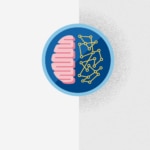What is behavioral economics?
Every day, we ask our brains to make decisions, about what to wear, what to order, which shoes to buy, which route to take to work. Some of these decisions are made so automatically, we aren’t even aware we’re making them. Our brains do that on purpose -- relying on shortcuts and preferences -- to avoid the continuous ongoing stress of making the same decisions again and again.

The study of those “automatic” decisions is called behavioral economics, and many of the decisions we make automatically aren’t always in our best interests. For example, most of us are pre-programmed to choose a safe option rather than risk uncertainty. Given the choice between a 50 percent chance of going on a three-week trip versus a certain one-week trip, nearly 80 percent of participants opted for the one-week trip.1 In that example, there’s nothing wrong with the one-week trip, but we miss out on a potentially valuable alternative.
These types of shortcuts and preferences can interfere with our decision-making, particularly when it comes to decisions we aren’t comfortable making. Consumers tend to accept options that are comfortable, that continue what they’ve always done, or serve as the default - in other words, the options that require the least amount of thought and action. While these choices may be perfectly fine, this lack of awareness can actually shift the decision-making from the conscious to the subconscious part of the brain without consumers realizing it.
Gels: We know that many consumers aren’t particularly comfortable making financial decisions, which means they are likely to default to what they know rather than the best option.
“We know that many consumers aren’t particularly comfortable making financial decisions, which means they are likely to default to what they know rather than the best option,” said Michelle Gels, Behavioral Economics Discipline Head at BBVA Compass. “We know, for example, that when we provide too much information -- or too many choices -- most consumers will choose not to make a decision.”
Seventy percent of human decision-making is emotional, and behavioral economics provides a framework to understand when and how people make errors based on those emotions. By studying the systematic errors or biases that recur predictably in specific circumstances, behavioral economics can be used to create environments that nudge people toward wiser decisions and healthier lives, according to Shahram Heshmat Ph.D. in an article in Psychology Today.
As part of its global digital transformation, BBVA is using behavioral economics theories to improve the overall customer experience both online and in its mobile app. Using helpful techniques such as providing context surrounding account information, offering feedback and showing progress toward goals, the bank hopes to provide the nudges that help consumers make the most beneficial decisions for their financial situation.
Gels: When we better understand the biases and shortcuts through behavioral economics, we can help guide the process so consumers can...build a more solid financial foundation.
“In a digital banking environment -- whether that’s the mobile app or the online banking platform -- consumers rely on the user interface to guide them through the account opening and account management processes,” said Gels. “When we better understand the biases and shortcuts through behavioral economics, we can help guide the process so consumers can make the decisions that help them build a more solid financial foundation.”
This article is the first in a series on behavioral economics. Click below to read other articles in this series:
How can behavioral economics help consumers?
The biases that hamstring our decision making
1 Daniel Kahneman and Amos Tversky (1986) Prospect Theory: An Analysis of Decision Under Risk, Certainty, Probability, and Possibility.